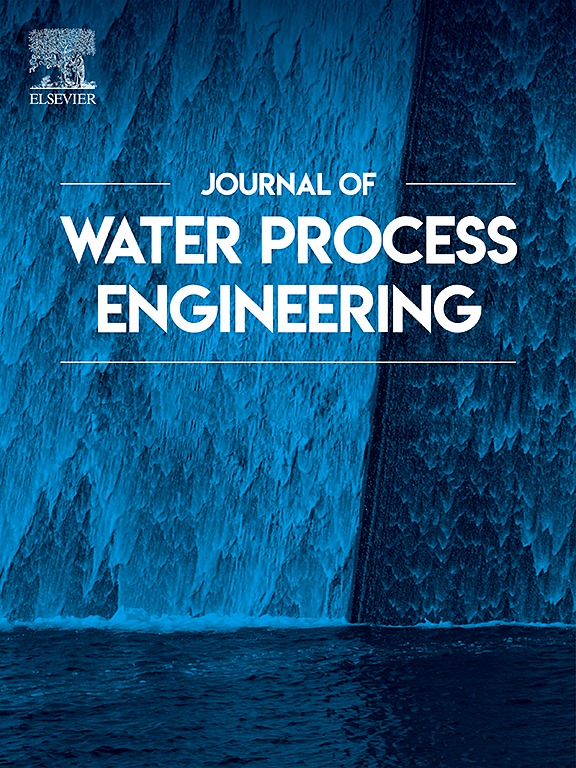Effects of physical treatments and moisture content on chitosan-based hydrogels designed to adsorb ethinylestradiol at low concentrations
IF 6.3
2区 工程技术
Q1 ENGINEERING, CHEMICAL
引用次数: 0
Abstract
Anthropogenic impacts on the environment have increased research regarding environmental pollution and water quality. Studies reporting emerging contaminants have raised concerns as their effects on health and ecosystems are unknown. Hormonally active agents are a prominent subcategories of emerging contaminant pollution consisting of natural and synthetic compounds. Ethinylestradiol is a synthetic pharmaceutical steroid hormone of interest because of its mechanisms of entering the environment and its metabolic resistance. Adsorption technologies are favourable methods of pollutant removal due to their relative ease of implementation, cost-effectiveness, and potential for environmental friendliness. Hydrogels are three-dimensional hydrophilic networks of chain polymers that are well documented for their adsorption capabilities. Chitosan hydrogels were used to adsorb ethinylestradiol, and crosslinking was performed with glutaraldehyde to increase the hydrophobicity of the matrix. Historically, materials designed to adsorb ethinylestradiol have been tested at high concentrations which are unrealistic of what is measured in the environment, thus low concentrations of ethinylestradiol were used in adsorption testing. Physical treatment methods including microwave treatment, liquid nitrogen submersion, and overnight freezing were explored to increase the pore size and exposed surface area of the hydrogels. Treatments performed after synthesis increased the adsorption capacity of the hydrogels, particularly when the moisture content was high. Microwave-treated hydrogels adsorbed the most ethinylestradiol with an adsorption efficiency of 62 % when tested at a low ethinylestradiol concentration (400 ng/mL). High moisture content liquid nitrogen-treated hydrogels and microwave treated hydrogels adsorbed the most ethinylestradiol when tested at higher concentrations (5000 ng/mL), resulting in a removal efficiency of 61 %.

求助全文
约1分钟内获得全文
求助全文
来源期刊

Journal of water process engineering
Biochemistry, Genetics and Molecular Biology-Biotechnology
CiteScore
10.70
自引率
8.60%
发文量
846
审稿时长
24 days
期刊介绍:
The Journal of Water Process Engineering aims to publish refereed, high-quality research papers with significant novelty and impact in all areas of the engineering of water and wastewater processing . Papers on advanced and novel treatment processes and technologies are particularly welcome. The Journal considers papers in areas such as nanotechnology and biotechnology applications in water, novel oxidation and separation processes, membrane processes (except those for desalination) , catalytic processes for the removal of water contaminants, sustainable processes, water reuse and recycling, water use and wastewater minimization, integrated/hybrid technology, process modeling of water treatment and novel treatment processes. Submissions on the subject of adsorbents, including standard measurements of adsorption kinetics and equilibrium will only be considered if there is a genuine case for novelty and contribution, for example highly novel, sustainable adsorbents and their use: papers on activated carbon-type materials derived from natural matter, or surfactant-modified clays and related minerals, would not fulfil this criterion. The Journal particularly welcomes contributions involving environmentally, economically and socially sustainable technology for water treatment, including those which are energy-efficient, with minimal or no chemical consumption, and capable of water recycling and reuse that minimizes the direct disposal of wastewater to the aquatic environment. Papers that describe novel ideas for solving issues related to water quality and availability are also welcome, as are those that show the transfer of techniques from other disciplines. The Journal will consider papers dealing with processes for various water matrices including drinking water (except desalination), domestic, urban and industrial wastewaters, in addition to their residues. It is expected that the journal will be of particular relevance to chemical and process engineers working in the field. The Journal welcomes Full Text papers, Short Communications, State-of-the-Art Reviews and Letters to Editors and Case Studies
 求助内容:
求助内容: 应助结果提醒方式:
应助结果提醒方式:


